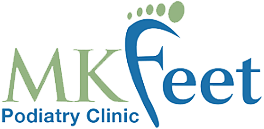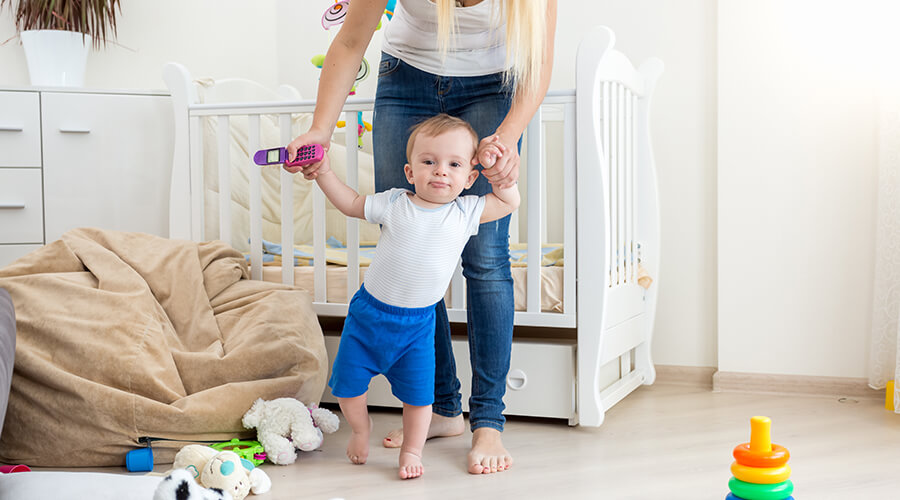We have put together a comprehensive guide to both in-toeing and Genu Valgum, which will run through everything you need to know about the causes, signs, symptoms and treatments of these common issues.
What Causes In-Toeing?
There are multiple causes of in-toeing, including soft tissue tightness or bony deformities of the feet or legs. The deformity may occur from the tibia or femur twisting inwards too much, a soft tissue tightness or from the metatarsal bones in the feet facing inwards. Your podiatrist will determine the cause during an assessment.
Metatarsus Adductus is a common foot deformity at birth where the front half of the foot turns inwards causing the foot to appear as a banana shape. In most children, this will correct itself in time; however, in a small percentage of children, the deformity will remain, resulting in an in-toeing appearance.
Soft tissue tightness of the hamstrings or ligaments at the hips can also cause an individual to in-toe.
Our tibia and femur bones which are the main two bones in our legs are formed through a twisting motion to increase the tensile strength. This results in our knees facing inwards and our legs in a knock knee position (Genu Valgum) which also causes the feet to turn in, this is part of normal development around 3 years old.
The deformity may occur from the tibia or femur twisting inwards too much, a soft tissue tightness or from the metatarsal bones in the feet facing inwards. Your podiatrist will determine the cause during an examination.
What Is Genu Valgum?
Genu Valgum; also known as knock knees, is a deformity where the knees are turned inwards and are placed together. Genu Valgum usually resolves around the age of 6 when the legs straighten out, and the knees point forwards; if there is a severe deformity or this problem does not resolve by this age, there may be other underlying problems that need addressing.
What Are The Causes Of Genu Valgum?
Genu Valgum may be secondary to hypermobility, causing flatfeet and the knees to turn in. Other predisposing factors may include trauma, infection, Downs Syndrome, a lack of vitamin D or calcium deficiency. Genu Valgum is often familial although it may also occur sporadically.
It is one of the most common causes of anterior knee pain in children and adolescents.
What Are The Signs and Symptoms of Genu Valgum?
Signs and symptoms include the child’s feet turning inwards. You may notice the individual will trip or display clumsy behaviour more than usual. The individual may complain of knee pain.
What Is The Treatment of Genu Valgum?
The treatment of Genu Valgum is dependent on the cause. A comprehensive assessment is necessary in order to generate the most effective treatment plan. When the child is idiopathic, in most cases the condition is self-limiting and does not require intervention. However, adolescent Genu Valgum is not self-limiting or benign and may present with a circumducted gait and knee pain.
Orthotics can offer support in order to correct the foot deformity and help with the alignment of the legs. Strengthening and stretching exercises are necessary to hold the legs in a corrected, straighter position. In more severe cases a brace or surgery may be necessary.
If not treated at the correct intervention point, the individual could develop to more serious problems such as Patella Femoral Syndrome, osteoarthritis, flat feet or lateral meniscus tare.


